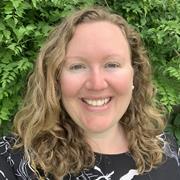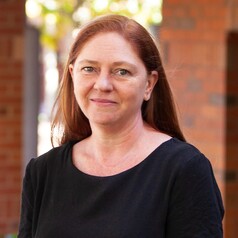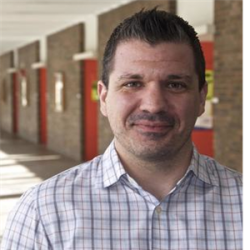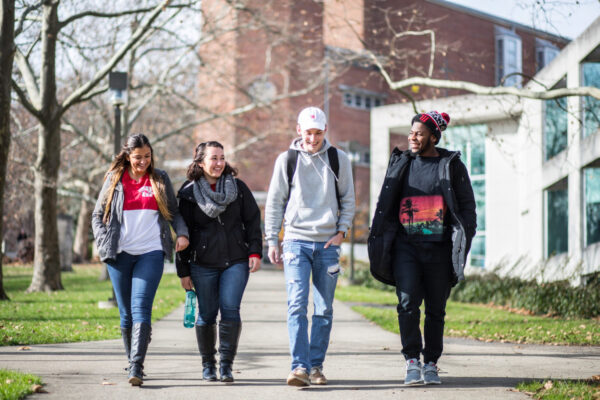Students’ college years coincide with their transition to adulthood, marking a period of intense identity exploration and a sense of endless possibilities. These years are also fraught with change—moving away from family and friends, the demands of college coursework, and the pressures of living on campus. Difficulty adapting to these transitions can increase potential for risky behaviors as well as mental health struggles. As a result, college is an optimal time to address lifestyle behaviors that are concerning but can be changed.
Over the past two years, the COVID-19 pandemic has had a significant effect on student wellbeing. One area of particular concern is the impact of the pandemic on non-suicidal self-injury (NSSI), a major predictor of suicidal thoughts and behavior. (Additional studies about this link can be found here and here.) What can we do to address the increased risk?
Self-injury among university students
In 2019, we and other colleagues shared an overview of NSSI and associated concerns for college students for Higher Ed Today, noting several takeaways:
- NSSI is the deliberate, self-inflicted damage of the body without suicidal intent and for purposes not socially or culturally sanctioned. Common methods include self-cutting, burning, self-hitting, and severe scratching/skin abrading, among others.
- The most common reason given for NSSI is to regulate intense emotional distress, although self-punishment motives are also common.
- Young adults are most likely to engage in NSSI, with men equally as likely to take part as women.
NSSI differs from suicidal behavior in that it involves non-lethal intent, occurs more frequently, and often appears at an earlier age. Nevertheless, mounting evidence suggests that NSSI is the most reliable risk factor for suicidal ideation and attempts among university students.
COVID-19 and NSSI risk
Unfortunately, the stresses provoked by COVID-19 can exacerbate NSSI risk. Many students have lost loved ones, and bereaved students will require additional care and support. Even if they are not grieving, most students—if not all—have experienced significant stress during the pandemic.
As society at large has reopened, students may continue to worry about infections, as well as feel distress due to loneliness and isolation, frustration and anger over missed milestones and opportunities, and changes or limitations to established daily routines. The necessary public health measures implemented to thwart the spread of the disease have meant that many students completed and started their academic years isolated from others. NSSI in the context of social isolation may increase suicide risk, and a lack of belongingness is a recognized major factor in suicidal behavior.
The pandemic disrupted the education even for students with strong emotional support systems. Students are concerned about the impacts of online learning, a gap year, missed semesters, and changes to grading policies. Beyond disruptions to coursework, students lost opportunities for internships and other off-site practical experiences. Although some students merely slowed their course progression, others (e.g., in medicine, nursing, psychology) were unable to gain practicum hours required for professional registration, leading to delayed graduation, the end of scholarships, and increased fees. Some graduate students were unable to work in university laboratories, conduct fieldwork, or may have had difficulties accessing key resources such as libraries if working from home.
Students also have had their own job security to contend with. As universities struggle with the financial impact of COVID-19, largely resulting from a downturn in the international student market, students may find they no longer have work as tutors or research assistants. Similarly, the hospitality industry, one of the biggest employers of students, was among the hardest hit during the pandemic. The financial stress may exacerbate anxieties associated with COVID-19 and increase the risk of NSSI among vulnerable students. This time may be particularly challenging for students who self-injure, given that they report difficulties with coping and elevated stress.
Mitigating risk for NSSI
Given ongoing stressors, it is imperative that students have ready access to support. It is helpful to have resources available both online and in person, so they are accessible to students both on campus and remotely if pandemic restrictions shift. This effort requires a unified and multi-faceted approach involving all campus stakeholders. Also important is ensuring that students who engage in NSSI have quality coping resources.
The following outlines the roles that key stakeholders can play. Table 1 also outlines key NSSI resources for different university stakeholders. Readers interested in further guidance to address NSSI on campus are also encouraged to read this recent position paper.
Administration. Many existing campus initiatives to address mental health and wellbeing may overlook or neglect to formally consider NSSI. Administrators should ensure that NSSI is incorporated by emailing resources to a variety of stakeholders and making sure they are also shared as hard copies on campus.
Campus staff in support roles. Most campuses have an array of professionals and staff who work in support roles with students, such as physicians and nurses in campus health clinics, mental health professionals in campus counselling settings, residence hall staff, and peer support networks. These staff are likely to be a primary point of contact for students who self-injure as well as students who may be concerned about roommates, friends, or romantic partners who self-injure. It is critical that they have access to resources about how to effectively respond to students who engage in NSSI. Wide distribution of these resources on relevant websites (e.g., those focused on student wellbeing, campus counselling, or student support networks) and college social media accounts is recommended.
Students. Any initiative to address NSSI on campus needs to involve all students, including those who self-injure and those who do not. Students who engage in NSSI must have access to alternative coping resources, including how to cope with urges to self-injure. Further, it is important that these students are aware of what resources they can access on and off-campus. Resources are similarly important for students who do not self-injure as they may know of other students who do. Everyone on campus can play a role in effectively responding to students who self-injure or who are at risk.
Conclusion
Colleges and universities play a critical role in fostering student wellbeing and addressing NSSI. In light of the immense ongoing impacts of COVID-19 on students, risk for NSSI may remain elevated. As the pandemic continues and associated public health measures shift for the foreseeable future, added stressors may continue to heighten risk for self-injury. Institutions can thus play a vital role in supporting these students by ensuring that all campus stakeholders have ready access to supportive resources.
If you have any questions or comments about this blog post, please contact us.







